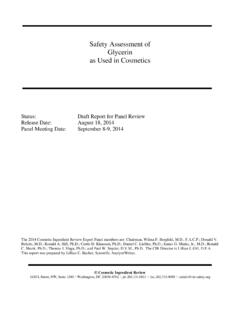Transcription of Paramparagat Krishi Vikas Yojana (PKVY)
1 Paramparagat Krishi Vikas Yojana (PKVY). Manual for District- Level Functionaries 2017. PREFACE. The purpose of this Development Manual for Paramparagat Krishi Vikas Yojana (PKVY) is to create an enabling mechanism for improved implementation of the Scheme at the cutting edge, leading to enhanced outcomes in nature and extent. Accordingly, it is a guide for implementation by the District Collector and key District-level functionaries, and enables quick learning, implementation modalities, roles and responsibilities of the various functionaries as well as stakeholders etc. This Manual is prepared with inputs from a combination of sources, including interactions with the Department of Agriculture Cooperation and Farmers Welfare (DAC & FW), Government of India (GoI), review of extant scheme guidelines and circulars issued by the Departmentand discussions with the key personnel involved in implementation of the Scheme.
2 For greater direction, the guidelines cited must be referred to for guidance and clarification on implementation from time to time. i Contents 1. Paramparagat Krishi Vikas Yojana (PKVY) .. 1. About the Scheme .. 1. Objective .. 1. Approach .. 1. Key Components & Major Activities .. 2. Pattern of Assistance .. 6. Institutional Framework .. 9. Annual Action Plan under PKVY ..10. 2. Roles and Responsibilities of Key District- Level Functionaries ..11. PKVY Implementation Key District Level District Collector/ District Key Functionaries PKVY Implementation at the district level ..12. Role of Local Groups ..16. Certification Process by Regional Councils (RCs) ..17. PKVY - IMPLEMENTATION MONITORING PROFORMA (MONTHLY REPORT) ..18. [For Regional Councils based on Annual Action Plan]* ..18. Abbreviations ..19. Endnotes and References.
3 20. 1. Paramparagat Krishi Vikas Yojana (PKVY). About the Scheme The Paramparagat Krishi Vikas Yojana (PKVY), launched in 2015, is an extended component of Soil Health Management (SHM) under the Centrally Sponsored Scheme (CSS), National Mission on Sustainable Agriculture (NMSA)1. PKVY aims at supporting and promoting organic farming, in turn resulting in improvement of soil health. The scheme promotes Participatory Guarantee System (PGS) For India (PGS- India)2. form of organic certification that is built on mutual trust, locally relevant and mandates the involvement of producers and consumers in the process of certification. PGS India operates outside the framework of Third Party Certification3 . Funding pattern under the scheme is in the ratio of 60:40 by the Central and State Governments respectively. In case of North Eastern and Himalayan States, Central Assistance is provided in the ratio of 90:10 (Centre: State) and for Union Territories, the assistance is 100%.
4 The Scheme targets to form 10,000 clusters of 20 ha each and bring nearly two lakh hectares of agricultural area under organic farming by 2017-18. Objective4. The objective is to produce agricultural products free from chemicals and pesticides residues by adopting eco- friendly, low- cost technologies. Key Thrust areas of PKVY in promoting organic farming include the following: Promote organic farming among rural youth/ farmers/ consumers/ traders Disseminate latest technologies in organic farming Utilize the services of experts from public agricultural research system in India Organize a minimum of one cluster demonstration in a village Approach PKVY is implemented in a time frame of three years in line with the PGS-India's prescribed conversion period of 36 months from conventional farm to organic. Accordingly, PKVY promotes organic farming through a cluster approach to adopt PGS Certification.
5 PGS Certification facilitates farmers to certify their organic produce, label and market their products domestically. Major Features of the Scheme The cluster chosen for Organic Farming shall be 20 ha or 50 acres in extent and in as contiguous a form as possible. 1. Development Role Manual Paramparagat Krishi Vikas Yojana (PKVY). Total financial assistance available for a 20 ha or 50 acre cluster shall be a maximum of Rs. 10 lakhs for farmer members and Rs. lakh for mobilization and PGS Certification with a subsidy ceiling of one hectare per farmer Of the total number of farmers in a cluster, a minimum of 65 percent farmers should be allocated to small and marginal category, to be fulfilled at cluster level as far as practicable and where not possible to be satisfied at Mandal/Block/. Taluka or District level.
6 At least 30% of the budget allocations need to be earmarked for women beneficiaries/ farmers5. Key Components & Major Activities Model Organic Cluster Demonstrations Model Organic Farm Figure 1: Key components of PKVY. Model Organic Cluster Demonstrations6. Model Organic Cluster Demonstrations aim at boosting/ promoting organic farming among rural youth/ farmers/ consumers/ traders by creating awareness on the latest technologies of organic farming. These are conducted at the farmer's field in clusters of 20 ha or 50 acres under PKVY. Implementing Agencies (IAs) primarily are the Zonal Councils7 of National Centre for Organic Farming (NCOF), Participatory Guarantee System (PGS) registered Regional Councils (RCs) and other Public Sector Organisations of DAC & FW. Such demonstrations are actively supervised by the experts / scientists from Indian Council of Agricultural Research (ICAR), State Agricultural Universities (SAUs), Central Agricultural Universities (CAUs), Krishi Vigyan Kendras (KVKs), National Seed Corporation (NSC), Small Farmers Agribusiness Consortium (SFAC), Farmers Producers Organisations (FPOs) etc.
7 A Project Demonstration Team may be formed by these Implementing Agencies (IAs) for improved focus and timely implementation. Each institution shall conduct three model organic cluster demonstrations in surrounding villages with a minimum of one cluster per village in a year. 2. Development Role Manual Paramparagat Krishi Vikas Yojana (PKVY). Financial Assistance 100 percent cent grant for ICAR Institutions, SAUs, CAUs, KVKs, NSC, SFAC. SFAC, FPOs etc Regional Councils (RCs) of the National Centre of Organic Farming (NCOF) are eligible for 90% assistance with at least 10 percent per contribution to the total project cost Funds for the activity are provided by the Integrated Nutrient Management (INM). division of DAC & FW, upon submission submiss of action planss by the Zonal Councils/. Regional Councils/ States.
8 States Major activities under Model Organic Cluster Demonstrations are as shown in the Figure 2. Mobilization of farmers/ local people to form clusters in 20 ha or 50 acres for PGS Certification Adoption of Participatory PGS Certification and Quality Control Guarantee System (PSG). Certification Conversion of land into organic Integrated Manure Management Manure Custom Hiring Centres Management and Biological Packing, Labelling and Branding of produce Nitrogen Harvesting Figure 2: Activities under Model Organic Cluster Demonstrations of PKVY. ertification8. Adoption of Participatory Guarantee System (PGS) Certification (A) Activities The first stage in the PKVY, the the adoption of PGS certification is done through a cluster approach,, for which financial assistance is provided. Participatory Guarantee System (PGS) of Certification To promote organic farming and domestic organic market, a free / no cost domestic organic Certification system called Participatory Guarantee system-India system (PGS-India).
9 India) is being implemented by Department of Agriculture, Cooperation and Farmers Welfare (DAC&FW). (DAC&FW), Government of India through National Centre of Organic Farming (NCOF), Ghaziabad and its seven Zonal Councils. 3. Development Role Manual Paramparagat Krishi Vikas Yojana (PKVY). In addition to these Zonal Councils, Regional Councils (RC)9 under PKVY also are authorized to work under PGS-India Programme. Logos used in PGS- India Organic Certification Programme are as follows: Logo used while marketing products Logo used while marketing products produced produced from the fields Under from the fields Completely converted into Conversion Organic . Major components of assistance in adoption of PGS certification are as follows (Figure 3 & Figure 4). Mobilization of farmers/ local people to form cluster in 20 ha or 50 acres for PGS Certification Farmers in the identified clusters are organized as Local Groups10 under PGS.
10 Certification. Lead Resource Person (LRP), the lead farmer is identified from each Cluster or Local Group (LG) by the RCs. Exposure visits to cluster Mobilisation of farmers to members to organic Formation of cluster and form clusters/ Local farming fields for farmers pledge to adopt Groups (LGs) viz conduct PGS practical knowledge on of Farmer meetings organic farming Trainings of cluster Identification of Lead members on organic Resource Person (LRP). farming within six from the Cluster / Local months of registration Group. Figure 3: Mobilization of farmers for PGS Certification PGS Certification and Quality Control Training to LRPs on Online registration of Training on PGS Soil sample collection soil sample collection farmers in PGS. Certification for LRPs by LRPs and testing and quality control Certification System Residue analysis of samples in National Process Inspection of fields by Accreditation Board Issue of PGS.

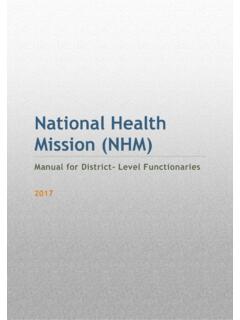

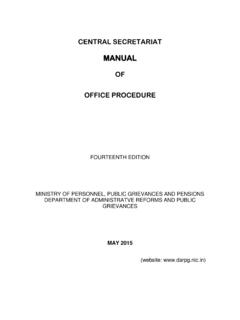






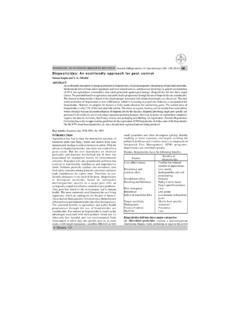
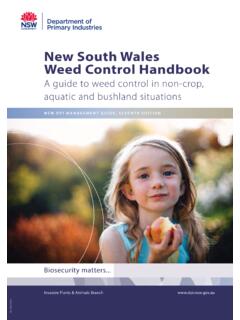
![STANDARD TERMS OF REFERENCE [TOR] FOR EIA / EMP …](/cache/preview/a/4/c/9/a/b/5/f/thumb-a4c9ab5ff9eff75d8a48f0eda9378841.jpg)
